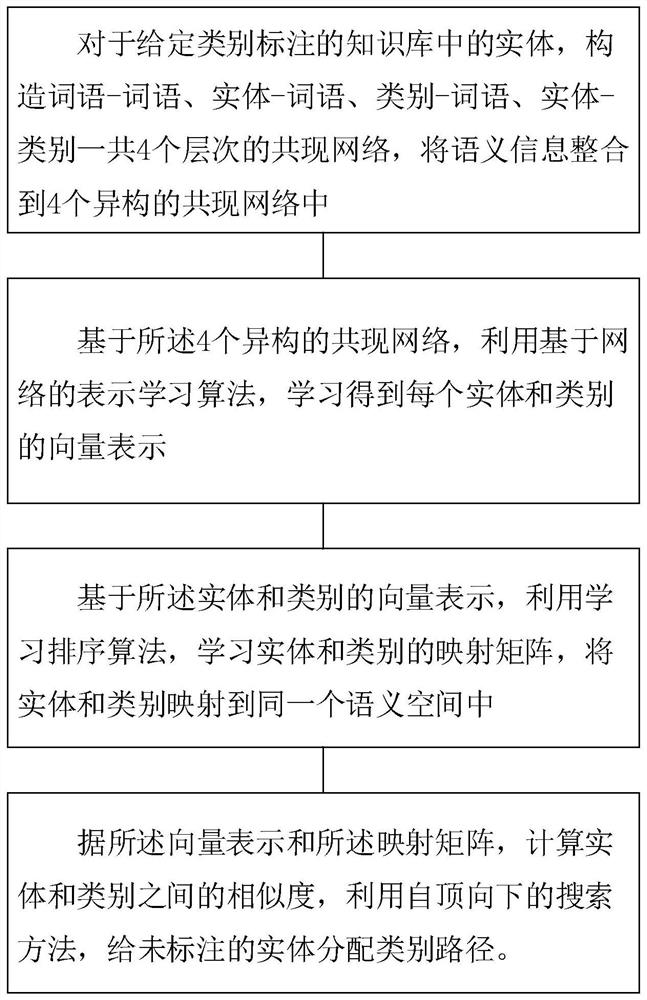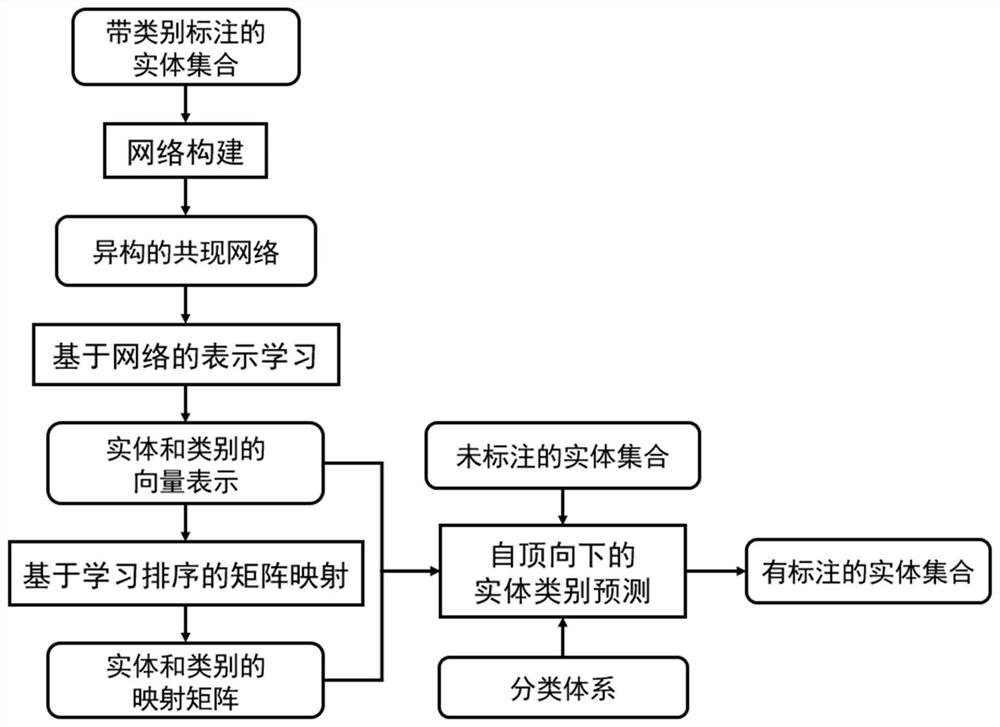A Computational Method for Entity Classification in Knowledge Base Based on Representation Learning
A computing method and knowledge base technology, applied in the field of text classification and knowledge base completion, can solve the problems of not fully considering the hierarchical structure of the classification tree, not fully considering the hierarchical relationship of categories, and less semantic information
- Summary
- Abstract
- Description
- Claims
- Application Information
AI Technical Summary
Problems solved by technology
Method used
Image
Examples
Embodiment Construction
[0062] In order to make the purpose, technical solutions and advantages of the embodiments of the present invention clearer, the technical solutions in the embodiments of the present invention will be clearly and completely described below in conjunction with the drawings in the embodiments of the present invention. Obviously, the described embodiments It is a part of embodiments of the present invention, but not all embodiments. Based on the embodiments of the present invention, all other embodiments obtained by persons of ordinary skill in the art without creative efforts fall within the protection scope of the present invention.
[0063] like figure 1 , figure 2 As shown, the invention provides a flow chart of a computing device for knowledge base entity classification based on representation learning. like figure 1 As shown, the method includes:
[0064] Step A: Construct 4 heterogeneous co-occurrence networks, namely word-word (word-word), entity-word (entity-word), ...
PUM
 Login to View More
Login to View More Abstract
Description
Claims
Application Information
 Login to View More
Login to View More - Generate Ideas
- Intellectual Property
- Life Sciences
- Materials
- Tech Scout
- Unparalleled Data Quality
- Higher Quality Content
- 60% Fewer Hallucinations
Browse by: Latest US Patents, China's latest patents, Technical Efficacy Thesaurus, Application Domain, Technology Topic, Popular Technical Reports.
© 2025 PatSnap. All rights reserved.Legal|Privacy policy|Modern Slavery Act Transparency Statement|Sitemap|About US| Contact US: help@patsnap.com



